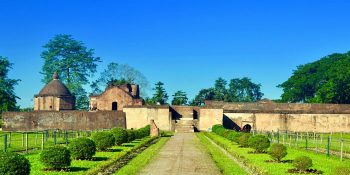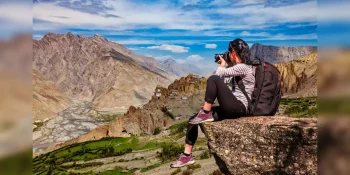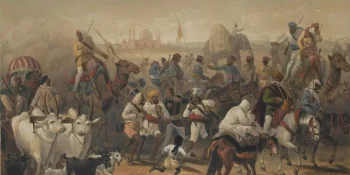Fatehpur Sikri stands as a testament to the grandeur and vision of the Mughal Empire in India. Located near Agra in the state of Uttar Pradesh, this architectural marvel was commissioned by Emperor Akbar in the late 16th century. Despite its relatively short-lived glory, Fatehpur Sikri remains a symbol of artistic brilliance, religious tolerance, and administrative innovation.
The city was founded in 1569 and served as the capital of the Mughal Empire for a little over a decade, from 1571 to 1585. Its construction was initiated to honor the revered Sufi saint, Sheikh Salim Chishti, whose blessings Akbar sought for an heir to his throne. Legend has it that the saint’s prophecy of a male heir came true shortly after the city’s completion, reinforcing its significance in Mughal history.
Architecturally, Fatehpur Sikri is a blend of Persian, Indian, and Islamic influences, reflecting the eclectic tastes of Emperor Akbar. The city’s layout was meticulously planned, with its buildings arranged in a strategic manner to optimize space and promote harmony. The use of red sandstone in most structures lends them a warm, distinctive hue, further enhancing their aesthetic appeal.
One of the most iconic landmarks within Fatehpur Sikri is the Buland Darwaza, or the “Gate of Magnificence.” Standing at an imposing height of 54 meters, this grand gateway serves as the entrance to the city and is adorned with intricate carvings and inscriptions from the Quran. Its sheer size and ornate design exemplify the architectural prowess of the Mughals.
Another highlight of Fatehpur Sikri is the Jama Masjid, a vast mosque constructed in the typical Mughal style. Its colossal courtyard can accommodate thousands of worshippers, underscoring the city’s role as a center of religious tolerance and communal harmony. Nearby lies the exquisite tomb of Sheikh Salim Chishti, a masterpiece of marble craftsmanship that attracts pilgrims and tourists alike.
The palatial complexes within Fatehpur Sikri, such as the Diwan-i-Khas (Hall of Private Audience) and the Diwan-i-Am (Hall of Public Audience), offer glimpses into the opulent lifestyle of the Mughal court. These structures served as venues for imperial gatherings and administrative proceedings, reflecting Akbar’s commitment to inclusive governance and dialogue.
One of the most intriguing features of Fatehpur Sikri is its abandonment shortly after its completion. Despite its grandeur and strategic significance, the city’s water sources proved inadequate to sustain its burgeoning population. Faced with the challenges of water scarcity and logistical constraints, Akbar reluctantly ordered the capital to be relocated to Lahore in 1585, leaving Fatehpur Sikri largely deserted.
Today, Fatehpur Sikri stands as a UNESCO World Heritage Site, attracting visitors from around the globe with its rich history and architectural splendor. Its well-preserved structures offer a glimpse into the glory days of the Mughal Empire, while also serving as a reminder of the ephemeral nature of power and prestige.
In conclusion, Fatehpur Sikri remains an enduring symbol of Mughal artistry, innovation, and cultural synthesis. Its majestic monuments and sprawling complexes continue to inspire awe and admiration, inviting visitors to delve into the fascinating history of medieval India. As a testament to the vision of Emperor Akbar, Fatehpur Sikri stands as a timeless monument to the enduring legacy of the Mughal Empire.









